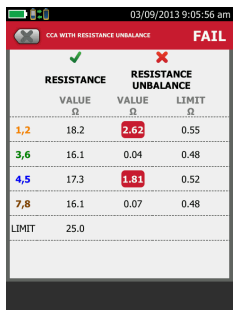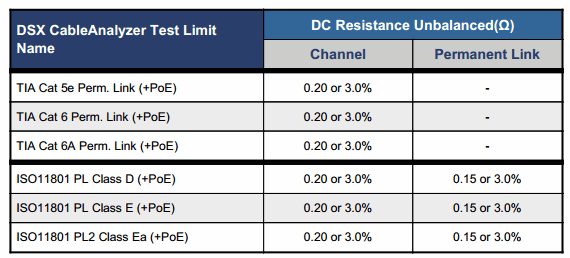How to Test for Copper-Clad Aluminum Cables
The existence of copper-coated aluminum cables in the market can present serious problems for the companies using them. In an excerpt from a recent white paper, Fluke Networks describes testing methods to identify copper-clad aluminum cable, and what the future holds for the process.
 There are growing concerns in the network equipment industry about the significant amount of multi-conductor communications cables containing copper-coated aluminum (CCA), copper-coated steel, and other non-standard conductors masquerading as Category 5e or even Category 6 cables.
There are growing concerns in the network equipment industry about the significant amount of multi-conductor communications cables containing copper-coated aluminum (CCA), copper-coated steel, and other non-standard conductors masquerading as Category 5e or even Category 6 cables.
The existence of these non-standard-compliant, and often counterfeit, cabling products in the market can present serious problems for the companies using them, as well as the cabling installers and engineers who place these products within their customers’ network environments.
While these products might look like standard cable and appear to perform like them in some situations, there are significant differences that could present network problems and safety hazards.
The presence of counterfeit cabling is not a new problem for the industry; fake or non-standard cable products have existed in the market for several years, according to experts. It is a persistent issue that won’t go away. Part of the reason is that many companies are looking for inexpensive networking solutions, and these cable products tend to be less costly.
Existing methods for identifying these non-standard products have been only partially successful. In order for the industry to effectively address the concerns of CCA and other non-standard cable products, new methods are needed.
A Common Problem
It’s difficult to quantify the market for counterfeit cables, said Frank Peri, executive director of the Communications Cable and Connectivity Association (CCCA), but he thinks the number of distributors and CCA cables represent significant enough share to be a major concern. “We tend to find more of these on the west coast [of the United States] because Long Beach [Calif.] is a huge port of entry.”
According to sources that are both knowledgeable and reliable, more than 984,000 feet of CCA cable masquerading as Category 5, 5e, and 6 is sold in the UK each month by certain wholesalers and distributors, said Mike Gilmore, managing director of e-Ready Building Ltd. and technical director of the Fibreoptic Industry Association (FIA). “The cables are generally sold through the electrical wholesaler market rather than the data market, so I only see them after a problem has been identified,” he said.
Gilmore attributes the demand for CCA cabling to commoditization of the products and the “de-skilling” of the data cabling industry. “Electrical contractors are now an obvious supplier for small data cabling tasks and they are very cost-driven,” he said. “The wholesalers know this and react accordingly. On many occasions the install is not tested using industry-standard test equipment, so the problems a Resistance Unbalance measurement re not found until it’s too late.”
Methods of Identifying CCA Cables
There are several methods for detecting counterfeit cable products. One way companies can test for the presence of CCA cables is by weighing the cable box. Because aluminum is lighter than copper, boxes of CCA cable tend to be noticeably lighter than their all-copper counterparts. However, CCA cable vendors are aware of this, and there have been reports of installers finding ballast in the cabling boxes, designed to make them feel as heavy as all-copper cables. Furthermore, there are heavier versions of CCA that can closely approximate the weight of real copper.
According to Peri, a more effective method for identifying CCA is to snip off a piece of the cable to expose the conductor, then scrape it with a knife to remove the top layer of copper. If there’s a silver color beneath, that indicates the presence of aluminum. The scraping method is fine if a company suspects that a new cable is counterfeit. If the cable is already installed in a building and the company is not pleased with its performance, cutting the cable is probably not the preferred method.
Cable testing is another way to identify fake cable, but field testing these CCA cables to either ANSI/TIA or ISO/IEC might not determine if they are CCA cables. Testing to the ANSI/TIA-568-C.2 standard is deferred to ANSI/TIA-1152 Requirements for Field Test Instruments and Measurements for Balanced Twisted-Pair Cabling, where DC resistance is not required to be included in a field test. Even if TIA required DC resistance as a field test, it would not guarantee finding CCA cable. We know this from looking at ISO/IEC results, where DC resistance does have a field test limit.
Using a particular CCA cable, a Class D Channel Link less than approximately 233 feet would almost certainly issue a pass because the DC resistance test limit is fixed at 25 ohms regardless of the length of the channel. At first glance, the solution might seem obvious: Make DC resistance a field test requirement and pro-rate the limit based on length. Practically speaking, the measurement uncertainty associated with length measurements would increase the probability of failing a link that is compliant.
Limited data from the field suggests that CCA cable fails DC resistance unbalance, regardless of length. That’s a parameter than can be found in both ANSI/TIA and ISO/IEC cabling standards as well as IEEE standards. This is also a measurement that can be carried out with Fluke Networks’ Versiv DSX CableAnalyzer. The DSX-5000 is designed to improve the efficiency of copper certification for testing Cat 6A and Class FA. When testing a CCA cable with the addition of DC resistance unbalance, Fluke Networks found the DC resistance unbalance to be clearly out of specification.
The resistance unbalance measurement verifies that both wires in a pair have equal resistance and will, therefore, carry equal amounts of current in a PoE application. The resistance unbalance limit is calculated for each pair based on that pair’s measured loop resistance.

But there’s a catch. While ISO/IEC 11801:2010 provides DC resistance unbalance test limits for the channel and permanent link definitions, ANSI/TIA-568-C.2 only provides test limits for the channel definition.

With the field testing standard ANSI/TIA-1152 now open for review, there might be just cause in defining DC resistance unbalance as a field test and setting test limits in ANSI/TIA-568-C.2 or its revision ANSI/TIA-568-D.2, to help deal with the CCA cable issue, and provide greater certainty of meeting IEEE PoE requirements.
Buyer Beware
Despite the efforts underway to educate the industry about the presence of counterfeit cable, and the methods for identifying CCA, the problem remains a serious one for the network cable market.
To avoid potentially serious problems and legal repercussions, it’s important that companies ensure they’re putting in reliable, standard cable products, regardless of their budgets. The temptation to purchase and install inexpensive cable in order to stay in line with budgets is strong. But this is clearly a case of “buyer beware.”
Because the installations of non-standard products are “cheap,” tests are not always undertaken in line with normal practice, according to Gilmore. “So the connections’ reliability problems are usually the first alert one receives – generally weeks after the install is completed.”
No single, all-encompassing solution to the problem exists today, and Fluke Networks is working to develop a test regime that actually invokes the requirements of the existing standards for length-dependent parameters, focusing of DC loop resistance.
“In Europe, I have repeatedly drawn the attention of installers and their clients to the existence of length-dependent limits, since they were included in the international and European cabling standards more than 10 years ago,” Gilmore said.
To read this application note in its entirety, click here.





